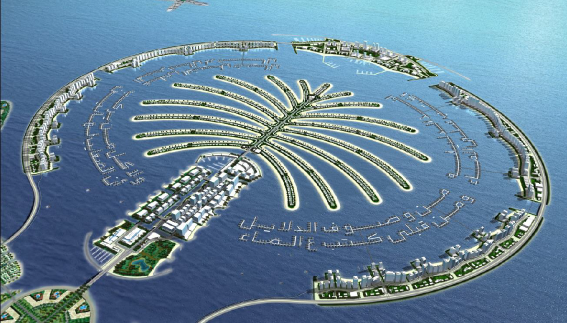2.2. Oceanic Islands
These islands are normally small and are located in the midst of oceans. They have no connection with the mainland which may be hundreds or thousands of miles away. They have a flora and fauna unrelated to those of the continents. Due to their remoteness from the major trading centres of the world, most of the oceanic islands are very sparsely populated. Some of them provide useful stops for aeroplanes and ocean steamers that ply between continents across vast stretches of water.
Oceanic Islands can be further classified as under:
1. Volcanic islands: Many of the islands in the oceans are in fact the topmost parts of the cones of volcanoes that rise from the ocean bed. Most of them are extinct, but there are also some active ones. The best known volcanic peak of the Pacific Ocean is Mauna Loa in Hawaii Other volcanic islands have emerged from the submarine ridges of the oceans.
The volcanic islands are scattered in most of the earth's oceans.
♤ In the Pacific Ocean, they occur in several groups such as Hawaii, the Galapagos Islands (Ecuador) and the South Sea islands.
♤ In the Atlantic are the Azores (Portugal), Ascension, St. Helena1, Madeira (Portugal) and the Canary Islands (Spain).
♤ In the Indian Ocean, there are Mauritius and Reunion (French Island in Indian Ocean).
♤ In the Antarctic Ocean are the South Sandwich Islands and Bouvet Island.
2. Coral islands: Unlike the volcanic islands, the coral islands are very much lower and emerge just above the water surface. These islands, built up by coral animals of various species, are found both near the shores of the mainland and in the midst of oceans. Coral islands include:
♤ Marshall Islands, Gilbert (Kiribati) and Tuvalu (formerly Ellice Islands) of the Pacific.
♤ Bermuda (British Overseas Territory) in the Atlantic. Laccadives and Maldives of the Indian Ocean.

1 Saint Helena, Ascension and Tristan da Cunha is a British Overseas Territory in the southern Atlantic Ocean consisting of the island of Saint Helena, Ascension Island and the island group called Tristan da Cunha.
Artificial Island
An artificial island is a man-made island, created by expanding existing islets, building on existing reefs or making them from scratch, off the coastline. Man has been building such islands for hundreds of years. The Flevopolder in the Netherlands is the largest artificial island in the world.
In News (The Hindu June 2012): Israeli politicians are floating an idea to expand their seaside country — artificial islands.
Palm Islands
The Palm Islands are two artificial islands in Dubai, United Arab Emirates in the shape of palm trees. The islands are the Palm Jumeirah and the Palm Jebel Ali.
Climate change has hit islands hard with some in danger of disappearing completely as sea levels rise. The world’s first underwater cabinet meeting organised by the Maldivian president on 17 October 2009 was a symbolic cry for help over rising sea levels that threaten the tropical archipelago’s existence

